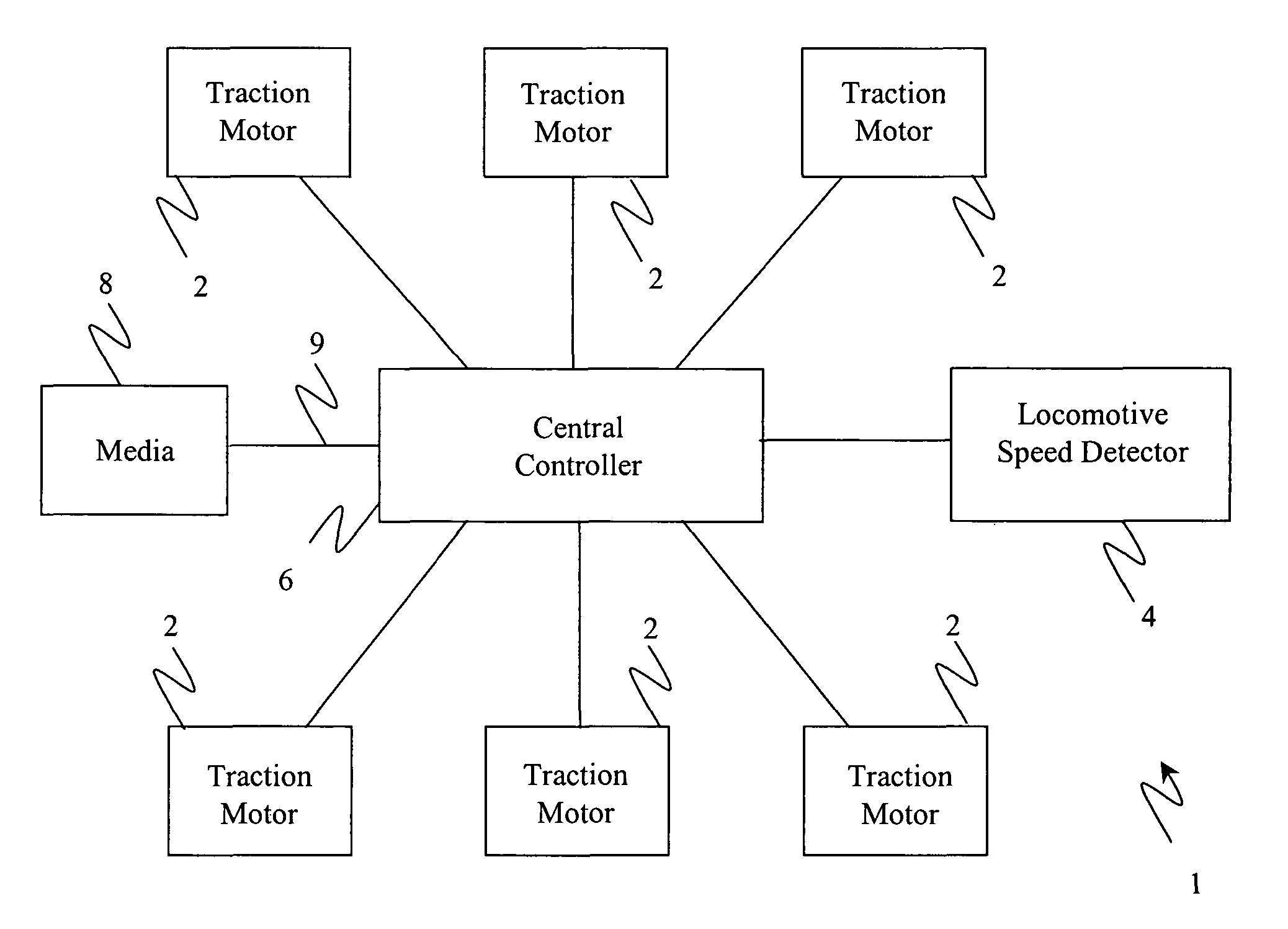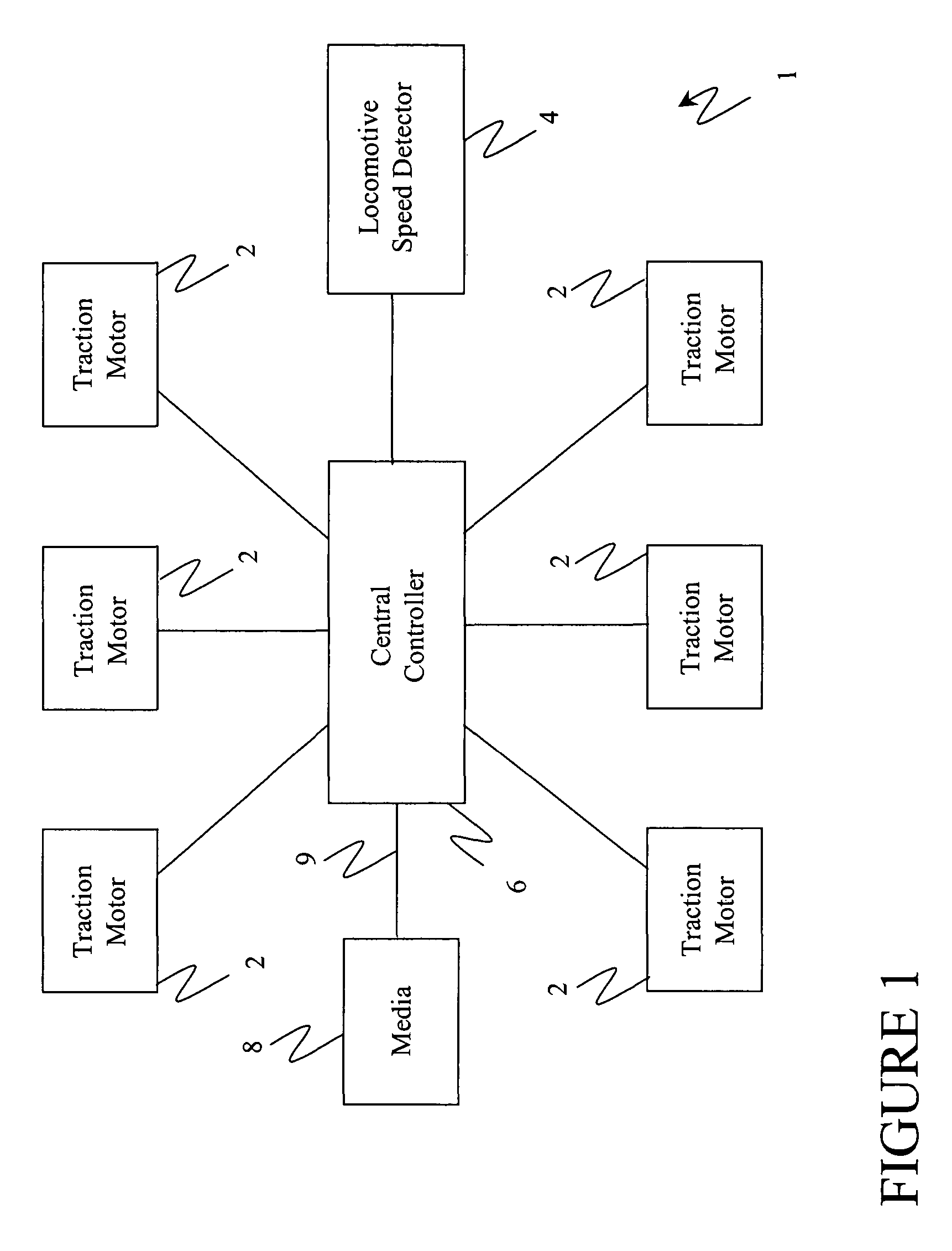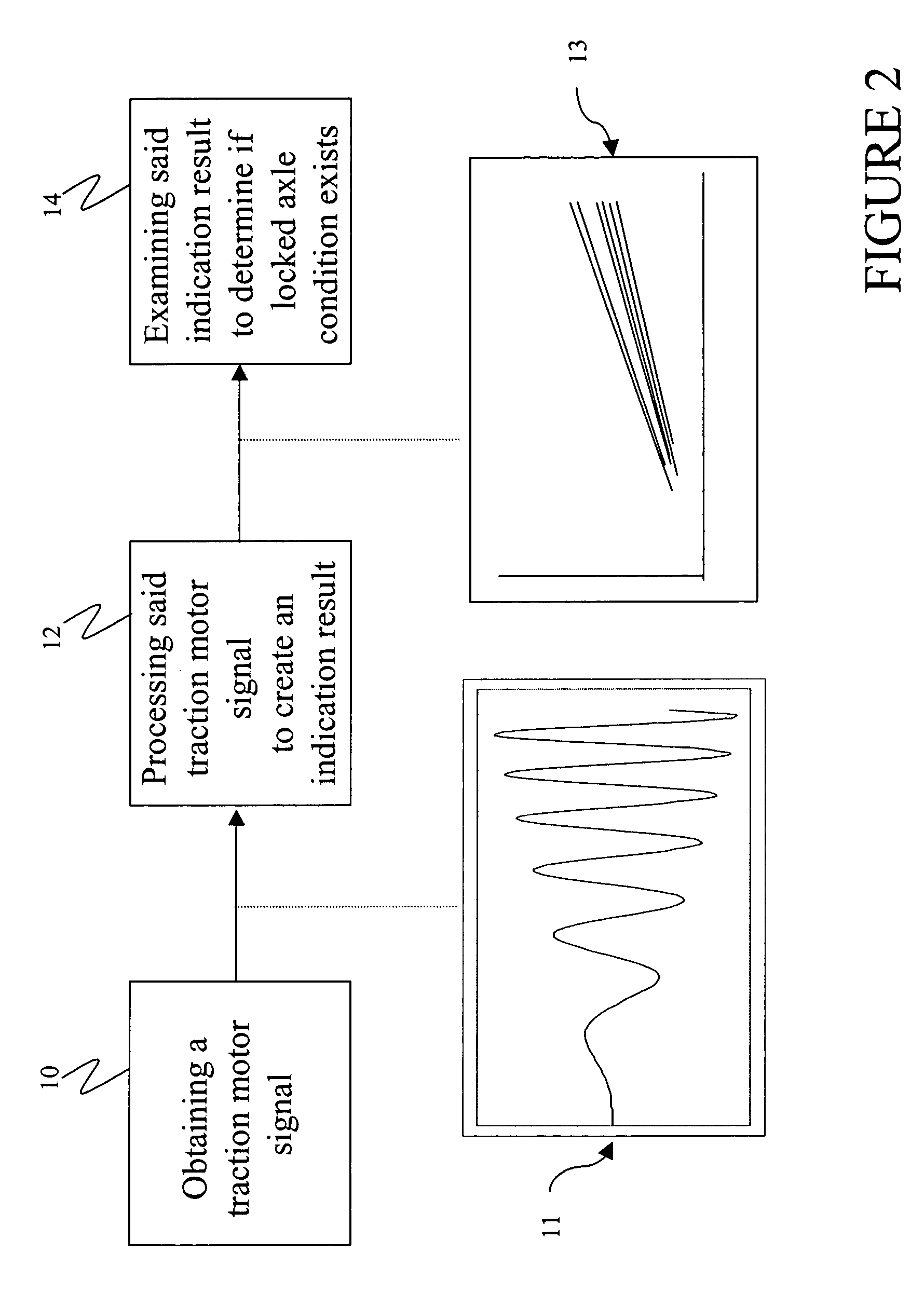Method for determining the rotational velocity of an axle and detecting a locked axle condition
a technology of rotational velocity and axle, which is applied in the direction of electric controllers, instruments, dynamo-electric converter control, etc., can solve the problems of affecting the handling characteristics of locomotives, affecting the speed of motor/axle, and affecting the operation efficiency of locomotives, etc., to achieve the effect of reliable determination of the speed of the motor/axl
- Summary
- Abstract
- Description
- Claims
- Application Information
AI Technical Summary
Benefits of technology
Problems solved by technology
Method used
Image
Examples
Embodiment Construction
[0026]It should be noted that although an exemplary embodiment is illustrated hereinafter with regard to a locomotive, it is considered within the scope this embodiment that the method may be applied to any vehicle 1 or device having a motor which produces a back electromotive force (EMF).
[0027]When turning, AC traction motors produce a small AC voltage (back EMF or electro motive force) across their terminals due to a residual magnetic flux. The amplitude of this voltage depends on the residual flux in the machine and the residual flux itself depends upon the motor characteristics and its operational history. The frequency of this induced voltage is proportional to the speed of the motor. An exemplary embodiment of the invention makes use of this back EMF voltage produced during non-excited state of the traction motor operation to determine a rotational velocity of the motor and optionally whether a locked axle condition exists. Therefore, a technical effect of an exemplary embodim...
PUM
 Login to View More
Login to View More Abstract
Description
Claims
Application Information
 Login to View More
Login to View More - R&D
- Intellectual Property
- Life Sciences
- Materials
- Tech Scout
- Unparalleled Data Quality
- Higher Quality Content
- 60% Fewer Hallucinations
Browse by: Latest US Patents, China's latest patents, Technical Efficacy Thesaurus, Application Domain, Technology Topic, Popular Technical Reports.
© 2025 PatSnap. All rights reserved.Legal|Privacy policy|Modern Slavery Act Transparency Statement|Sitemap|About US| Contact US: help@patsnap.com



